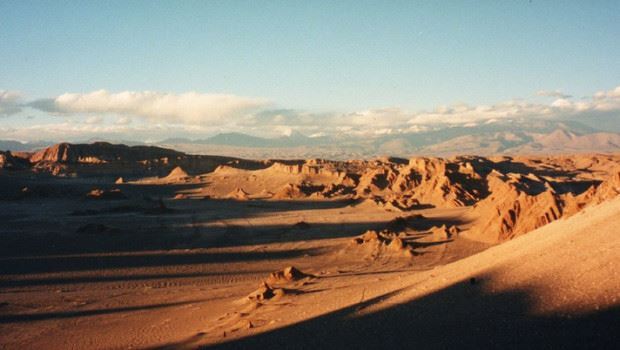Scientists say the Atacama is a lot like Mars
Scientists looking for landscapes resembling the otherworldly have come to South America.
The Atacama Desert, covering 54,000 square miles in southern Peru and northern Chile, is the driest place on earth. The region is exceptionally arid and rainfall is absent for years on end. Home to volcanos, salt flats, and massive mineral deposits, the Atacama Desert is the closest to Mars you can get without leaving the planet, according to space scientists who’ve been testing space equipment and watching the stars from this region for the past decade.

Just this month the NASA-backed ASTEP (Astrobiology Science and Technology for Exploring Planets) program released a rover named Zoe into the Chilean desert to test a laser Raman spectrometer called the Mars Microbeam Raman Spectrometer (MMRS). This piece of hi-tech equipment is the result of 18 collaborative years among scientists at Washington University in St. Louis (WUSTL) and the Jet Propulsion Laboratory (JPL).
Originally scheduled to visit Mars aboard rovers Spirit and Opportunity, downsizing kept the MMRS on Earth. So instead the MMRS is setting out across the Atacama in preparation for a possible 2020 mission to Mars. The rover will roam 25-30 miles during the next four weeks while taking soil samples for analysis. The MMRS then examines each sample for energy and composition, according to WUSTL. The test run is part of a $3 million NASA grant to make sure the enhanced spectrometer will be mission ready.

While Zoe and MMRS will be prepping for a space visit, other Atacama-based projects hope to peer into, rather than travel to, space. In March 2013 the scientific community celebrated the inauguration of the Atacama Large Millimeter/Submillimter Array (ALMA), a rather boring name for an exciting and ground-breaking astronomy observatory.
Opened in 2012, the ALMA inauguration marked the completion of all major systems in the observatory, which includes 66 antennas working together as a single telescope to peer deeper and farther into space using radio waves than previously possible. Located on a plateau 16,600 feet above sea level, the altitude and arid environment create the ideal location for star gazing (and listening). ALMA is the largest astronomical project on Earth.

Despite its dry reputation, the Atacama Desert is also a popular tourist destination. The bizarre land formations, odd swatches color among desolate sand dunes, flamingo filled lagoons, and steaming geysers have a certain sort of surreal appeal.
Keen to see the Atacama Desert for yourself? Check out our Chile & Easter Island tours here or speak to one of our Destination Experts about crafting the bespoke vacation of your dreams.
Thanks to Chris Huggins for the title image of this blog.